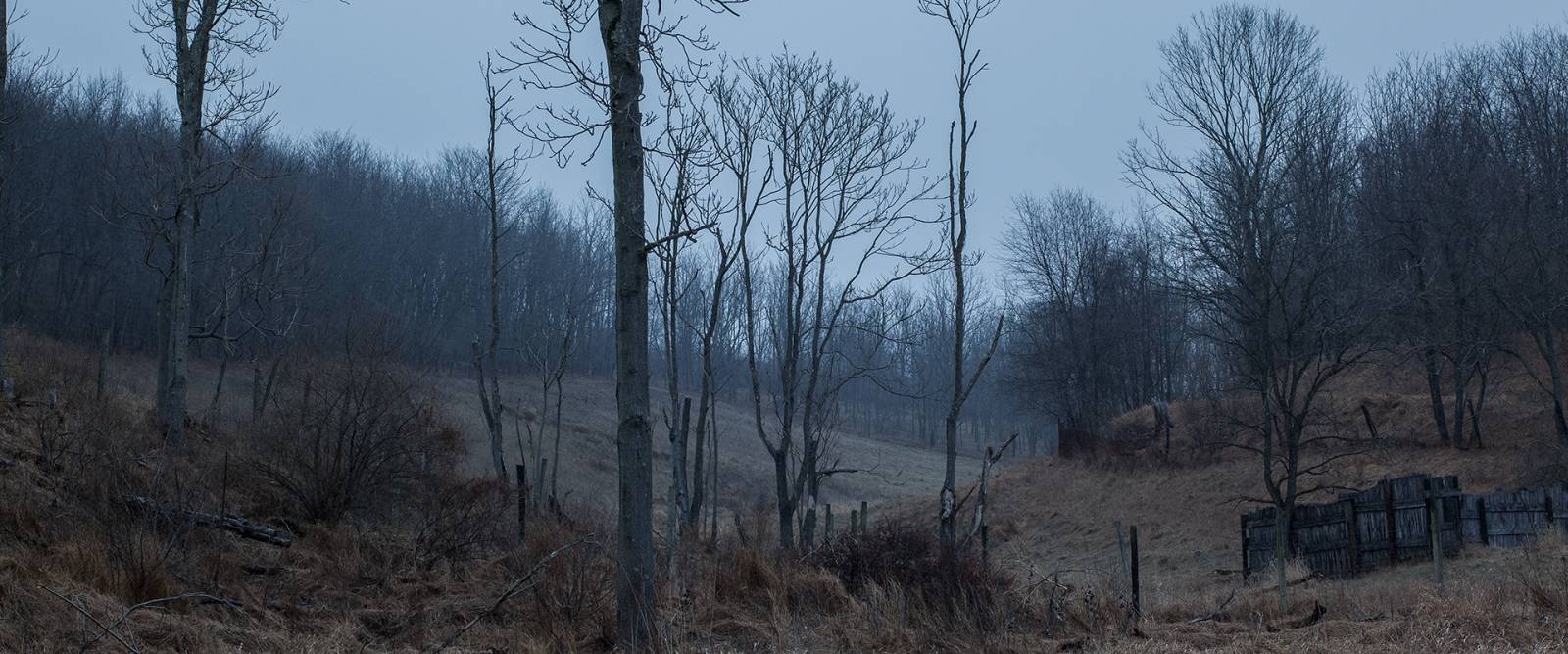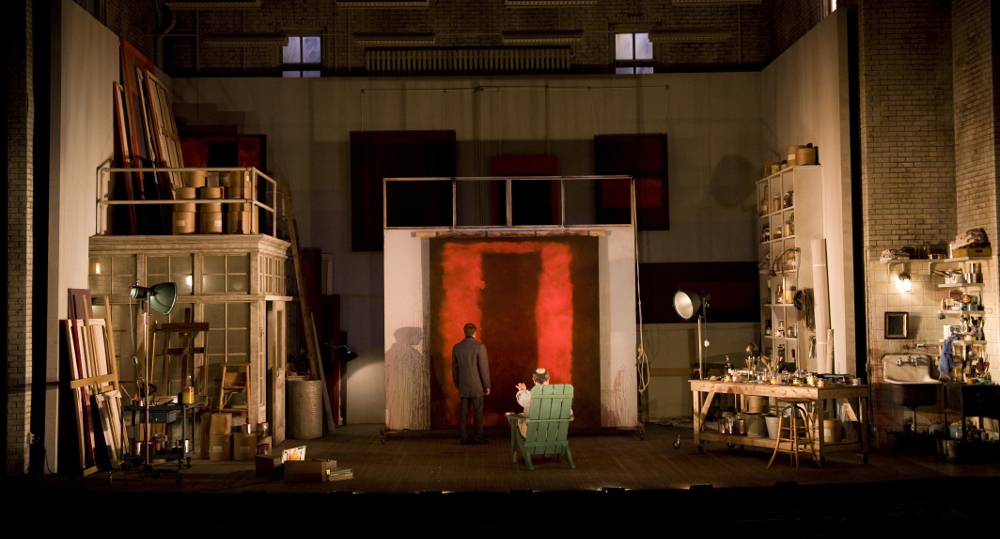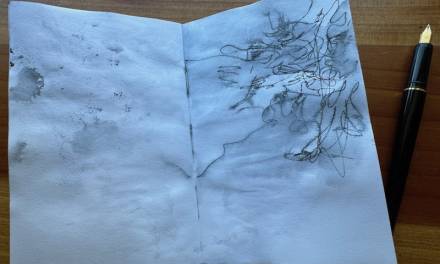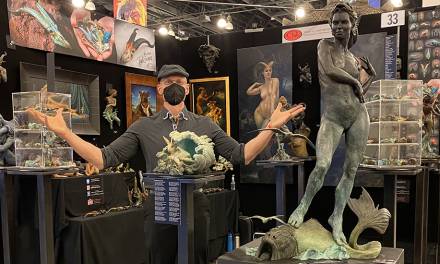If you’ll indulge me, today’s story begins, once again, with a camera.

Three years ago, a startup announced they were developing a brand new kind of camera. The idea was to achieve the results of an ultra high resolution DSLR in the footprint of a smartphone.
Normally the laws of physics would not allow this. The optics and sensors of high-end cameras are relatively mammoth compared to what fits in a phone. Long established companies have done some amazing things to shrink it all down, but this new company wanted to try a whole different strategy. They wanted to take a group of super tiny phone cameras and create a coordinated array. It would capture multiple shots and multiple focal lengths and stitch them together into huge, detail rich images. It would be software based for regular UI improvements and allow you to adjust focus after the photo was captured. It would have an optical zoom range of wide to telephoto and record images in excess of 50 megapixels. It would have no protruding lens and truly fit in a pocket.
In short, Instead of a big brick attached to a tube full of glass, you bundle sixteen miniature lenses and sensors up onto a touchscreen and they all work together to produce a huge high quality image. I’m never an early adopter, but I read about this three years ago and put my preorder down that same day. About two years after that, my camera-of-the-future finally arrived.
You might expect this to be a story about game changing ideas that solve a problem by thinking outside the box. Or you might think I’m going to do a product review on the camera (The Light L16). But that’s not what my story ended up being about.
My story was about how sometimes you realize you’ve been fighting the wrong battle. Sometimes you realize you’ve been chasing the wrong prize.
After over two very patient years of waiting, the L16s started shipping and I was really REALLY excited to start putting it to use. And, after all that anticipation, I was also really wanting to love it. Unboxing, testing, getting involved in online communities for new owners, I was excited at the outset.
There were some early model bugs, and some frustrations that were unanticipated. But these are to be expected by early adopters. Because the issues were largely software based, they were temporary until new patches could be released.
But after just a few weeks of shooting, I came to find the one deal breaker that no update was going to fix: I wasn’t having fun. In thinking of all the benefits of cramming a full 50mp DSLR kit into a phone, I somehow never thought of an inescapable problem: I don’t like taking pictures with my phone. It might be convenient, but it brings me no joy at all.
That’s very personal of course. Many people love shooting with their phones and don’t even see a reason to own a camera. But that’s not me. I like optical viewfinders. I like manual focus. I like mechanical objects built with insane precision. And when it comes to a tool that is going to help me make art, I need that tool to be something that I can truly engage with. That makes me feel connected to my process.
When it comes to painting, it’s no wonder that I never embraced the digital medium for finished work. It makes complete sense that I paint my sketches in oil instead of pixels. I do these things to get good results, but not because an analog medium is better. If anything, it’s inefficient and slow for commercial work. But it makes me happier. It makes me feel connected. It makes me excited to hold and handle and use.
I remember feeling stalled out in my early career because I wasn’t sure what my place was in the industry. After quite a bit of soul searching, it became clear that I was trying to compete with the polish and detail of digital painters but using traditional tools. I was throwing away the gifts of my medium (those qualities which make a painting “painterly”) to do in ten hours what digital tools can do in one. And the obvious solution would have been to change mediums. But I just couldn’t. I couldn’t be happy and engaged without the physical interaction and physical product.
I went the other way, and started embracing my paint. Big square brushes. Knife textures. Maybe a brayer every now and then. Blocking shapes and thinking alla prima helped me both maximize the advantage of my tools as well as create a workflow efficient enough to keep up with the realities of a digital market. It was like finally coming up for air. Giving over to that love of physical tools has even shifted my taste to appreciate a much wider range of artists and ideas. I don’t know if it makes my work better. I actually don’t even know how obvious it is in the end result. But it keeps me engaged and wanting to paint.
So I returned my L16 and turned to cameras that provide a manual, physical experience. As of recently (thanks in big part to my brother Anthony being on a similar kick) I’m even shooting film and developing it myself, something I haven’t done since the 90s. And I should make very clear, these are not practical solutions for all problems. I still have and use my DSLR exclusively for shooting models and paintings just the same as I’ll still turn around fast revisions on a job with the help of Photoshop. But when it comes to engaging with the medium creatively, I found that hyper-sharp render and fast, convenient results are not the end all be all. Enjoying the process weighs in heavily. The newest, fastest tools are going to make life more convenient, but when it comes to keeping the spark alive, I still like some old fashioned romance.









Great entry. There is something lost working digitally. Personally, I’ve retroactively began learning oil painting and I must admit I feel like an artist sitting before a canvas holding brushes, far more than sitting before a Cintiq holding a stylus. That said, I’ll stick to digital art for commissions, but, in the spirit of old fashioned romance, I’ve driven manual shift cars for the last eighteen years.
Totally hear you about the love of process. To stick to the camera /digital comparison, I love shooting Polaroids. While not the cheapest, it still involves analog and manual technology with the more modern need for instant results. Plus we shoot millions of photos on our phone but how many of them do we actually print and hang up. With Polaroids I enjoy the process as well as the unpredictable results. And it becomes a social thing as everyone wants to see the photos. I tried using a Roliflex and 2 1/4 film recently and while it turned out AMAZING photos the love was just not there in the same way. Great essay and it is a shame that camera wasn’t the right one for everyday use. It looks like it had so much potential.
I totally share the same feeling. I have been working digital for years, but have recently started to pick up traditional meduim again, though all commision work is still done digital. Just because I love making an original, and also going to the art store and take down real stuff down from the shelves. What it aslo givies me is that I feel I become a better digital artist by doing both.
I’m so glad you wrote this article, David. It really resonated with me.
I so admire and love the work of digital painters, but the medium has never worked for me and I feel the quality of the work I make with it is not as good as when I slow down and use a physical medium. It’s good to know I’m not the only one who feels this way. Just recently I when I want on a drive up the mountains I took my DSLR with me, and doing things manually, composing the shot, adjusting the aperture to increase or decrease my focal length, picking the right angle and lens for the mood I wanted to capture, all of that is time consuming and challenging and I LOVE it. Just standing and snapping a shot full of data and information that can be manipulated is an impressive feat of technology and has immense possibility. But I guess I’m incredibly “old fashioned”, I even grow and dry my own herbs and tea ingredients as much as possible.
Until digital provides a fully tactile experience, traditional mediums will always be universally more enjoyable. Humans can’t escape their lambic system, and they might not want to either.